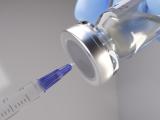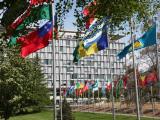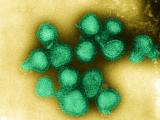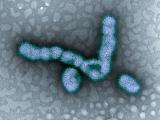Jul 28, 2010
Beijing study: Obesity, pregnancy not tied to serious H1N1
A study of 475 severe, 73 critical, and 69 fatal pandemic H1N1 cases in Beijing last year showed that heart disease, diabetes, and allergies increased the risk of serious disease, while obesity and pregnancy did not. Also, those aged 6 to 17 years had a lower risk of serious illness. The city had a case-fatality rate of 0.6%, and serious cases made up 5.7% of all H1N1 cases. About half the patients had no underlying condition (58% of severe, 53% of critical, and 41% of fatal cases).
http://dx.doi.org/10.1016/j.jinf.2010.07.010
Jul 27 J Infect abstract
Antivirals protected against secondary infection
Japanese public health staff visited 124 homes of people infected with pandemic flu last year, educating household contacts about flu-avoidance steps and providing 88% of contacts with antiviral drugs (postexposure prophylaxis, or PEP). The secondary attack rate (SAR) in the households visited was 0.6% in contacts given PEP (2 of 331, including an antiviral-resistant case), compared with 26.1% in those with no PEP (12 of 46). The researchers estimated the protective efficacy of PEP to be 98%.
http://dx.doi.org/10.1016/j.jinf.2010.06.019
Jul 27 J Infect abstract
Pandemic led to better hand hygiene
South Korean researchers who surveyed 942 college students last December found that 30% said they had increased their frequency of hand washing over the previous year. Female students, students who perceived hand washing to be effective, and those who perceived H1N1 illness to be more severe were more likely to wash hands frequently. The authors say their results suggest that public education campaigns are effective at changing behavior.
http://dx.doi.org/10.1186/1471-2334-10-222
Jul 28 BMC Infect Dis abstract



















